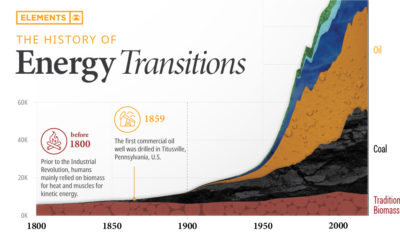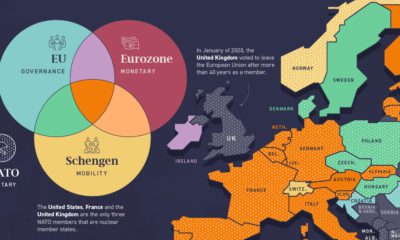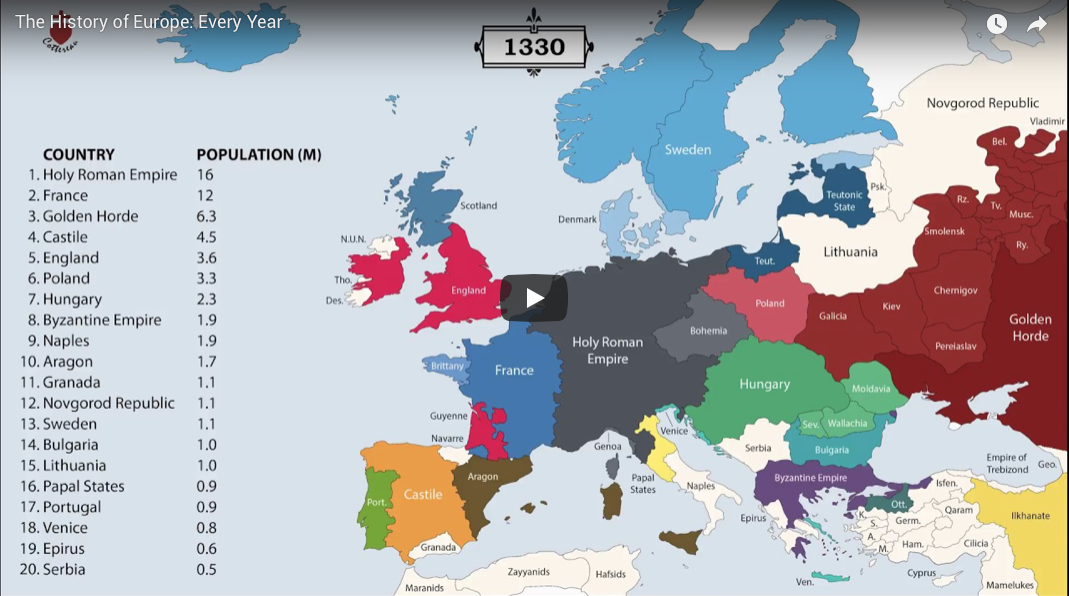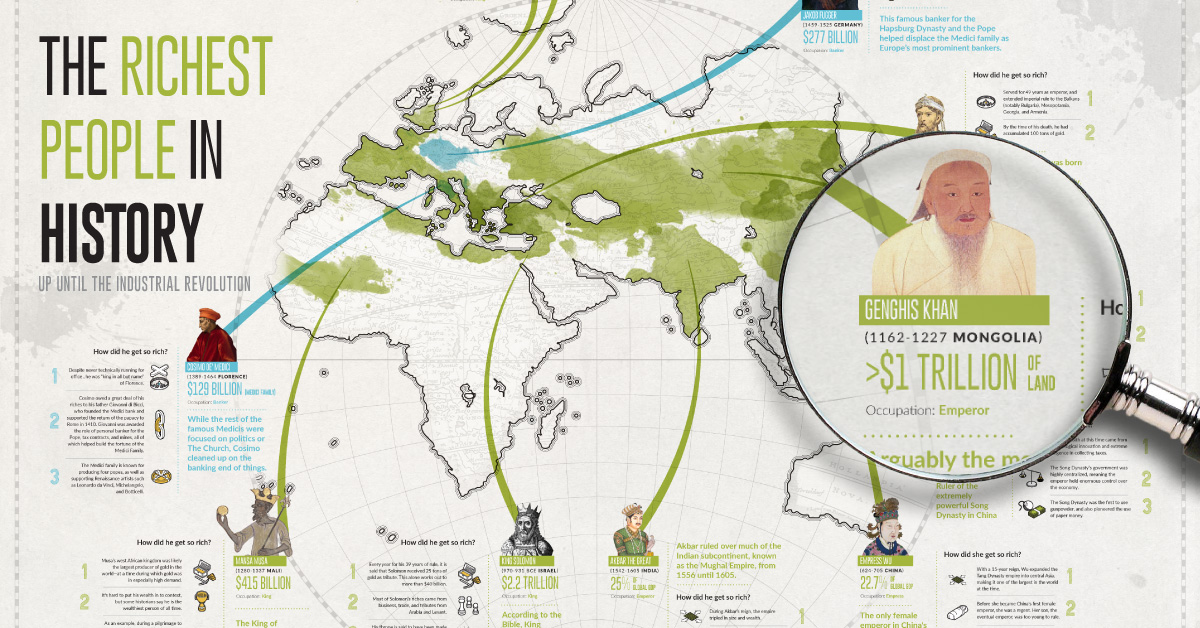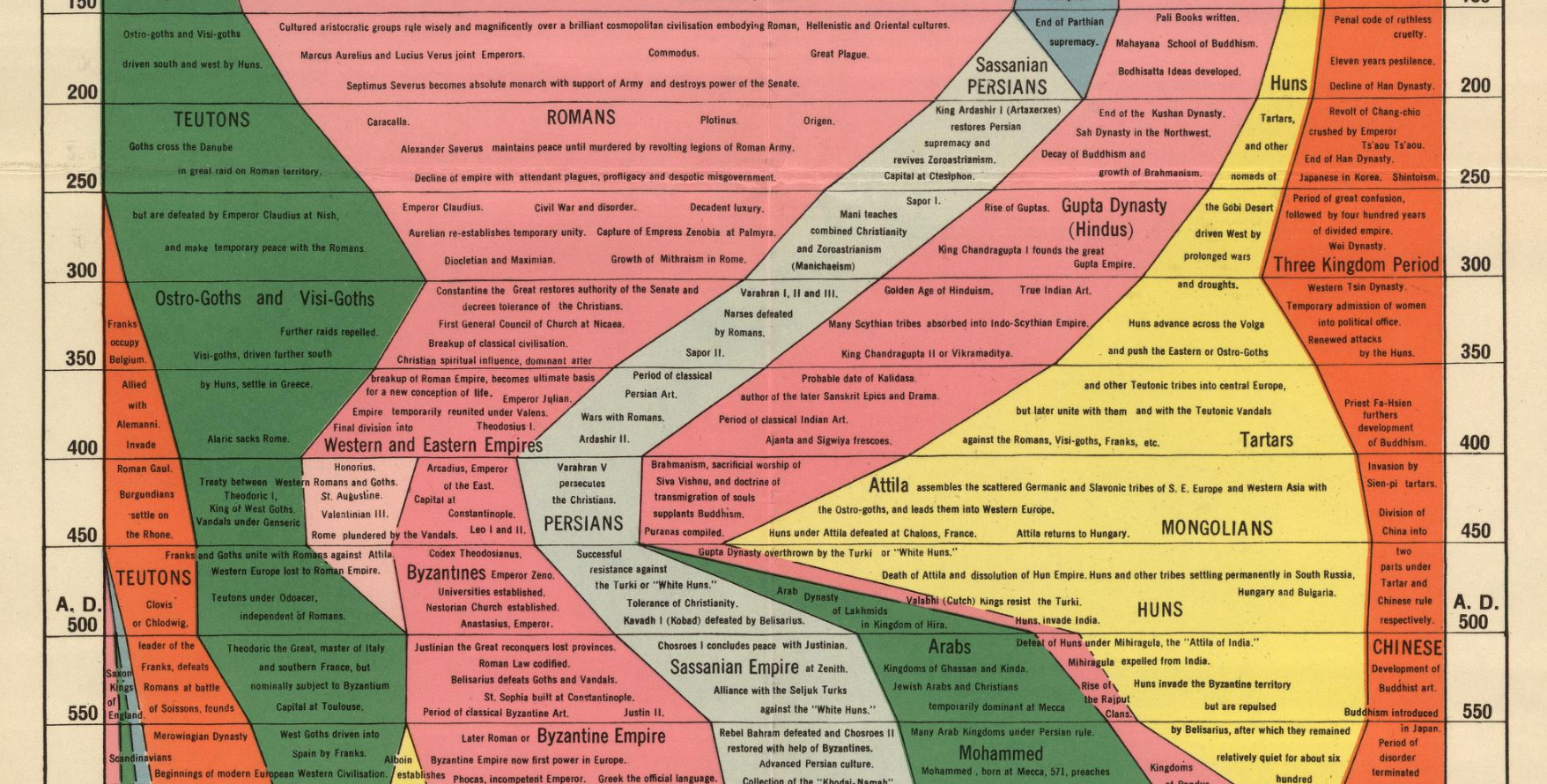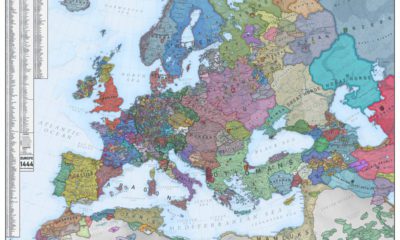Going as far back as the 1600s, English settlers arriving in the New World envisioned counties as a means of accessible government—a county seat was meant to be within a day’s buggy ride for every citizen. While the role of counties in local government has remained significant in modern times, their boundaries have changed drastically over the years. This animated map by Alexander Varlamov visualizes the history of U.S. county borders, and how these jurisdictions have evolved over time.
County Equivalents
Before diving in, it’s important to note a few county-equivalents that function similarly but go by different names:
Boroughs/Census areas: Alaska is made up of 19 boroughs, but the majority of its landmass is not included in them. Rather, it’s officially labeled by the Alaskan government as the unorganized borough. Parishes: Instead of counties, Louisiana uses the term parishes because of its French and Catholic heritage. Independent cities: These are cities that operate outside their surrounding county’s jurisdiction. There are 41 independent cities in the U.S. and 38 of them are in Virginia.
Over 300 Years of Growth
The number of counties in the U.S. has increased dramatically since the early days of American history. Here’s a look at their growth since 1790: The first county was established in 1634, over 100 years before the first Census was taken (and long before America gained independence). It was created in James City, Virginia—an interesting location, considering Virginia now has the highest concentration of independent cities. Why does Virginia have so many independent cities? The state’s separation of counties and cities dates back to the early 1700s. With a rural population and low productivity, it was difficult to establish town centers. After several attempts, the General Assembly gave up. Independent cities were established instead.
Short-lived Counties
Counties as a political organization have been around for hundreds of years, but some individual counties haven’t lasted long. For instance, Bullfrog County in Nevada was established in 1987 and dissolved just two years later. During its brief existence, it had no population and no infrastructure—and its primary purpose was simply to prevent Yucca Mountain from becoming a nuclear waste dump. While Bullfrog County has since been dissolved, the controversy around the nuclear waste site is ongoing as of 2020.
Continual Change
The latest official county, Broomfield Country, was established in Colorado in 2001. Although it’s been decades since the last county was created, there have been continual boundary changes and status updates—sometimes for political reasons. For instance, the Supreme Court recently ruled that half of Oklahoma is within a Native American reservation. While this doesn’t necessarily change ownership, it does affect jurisdiction and county authority. Though the lines on the map are more or less static now, the invisible lines of county jurisdiction will continue to change and evolve over time. on Even while political regimes across these countries have changed over time, they’ve largely followed a few different types of governance. Today, every country can ultimately be classified into just nine broad forms of government systems. This map by Truman Du uses information from Wikipedia to map the government systems that rule the world today.
Countries By Type of Government
It’s important to note that this map charts government systems according to each country’s legal framework. Many countries have constitutions stating their de jure or legally recognized system of government, but their de facto or realized form of governance may be quite different. Here is a list of the stated government system of UN member states and observers as of January 2023: Let’s take a closer look at some of these systems.
Monarchies
Brought back into the spotlight after the death of Queen Elizabeth II of England in September 2022, this form of government has a single ruler. They carry titles from king and queen to sultan or emperor, and their government systems can be further divided into three modern types: constitutional, semi-constitutional, and absolute. A constitutional monarchy sees the monarch act as head of state within the parameters of a constitution, giving them little to no real power. For example, King Charles III is the head of 15 Commonwealth nations including Canada and Australia. However, each has their own head of government. On the other hand, a semi-constitutional monarchy lets the monarch or ruling royal family retain substantial political powers, as is the case in Jordan and Morocco. However, their monarchs still rule the country according to a democratic constitution and in concert with other institutions. Finally, an absolute monarchy is most like the monarchies of old, where the ruler has full power over governance, with modern examples including Saudi Arabia and Vatican City.
Republics
Unlike monarchies, the people hold the power in a republic government system, directly electing representatives to form government. Again, there are multiple types of modern republic governments: presidential, semi-presidential, and parliamentary. The presidential republic could be considered a direct progression from monarchies. This system has a strong and independent chief executive with extensive powers when it comes to domestic affairs and foreign policy. An example of this is the United States, where the President is both the head of state and the head of government. In a semi-presidential republic, the president is the head of state and has some executive powers that are independent of the legislature. However, the prime minister (or chancellor or equivalent title) is the head of government, responsible to the legislature along with the cabinet. Russia is a classic example of this type of government. The last type of republic system is parliamentary. In this system, the president is a figurehead, while the head of government holds real power and is validated by and accountable to the parliament. This type of system can be seen in Germany, Italy, and India and is akin to constitutional monarchies. It’s also important to point out that some parliamentary republic systems operate slightly differently. For example in South Africa, the president is both the head of state and government, but is elected directly by the legislature. This leaves them (and their ministries) potentially subject to parliamentary confidence.
One-Party State
Many of the systems above involve multiple political parties vying to rule and govern their respective countries. In a one-party state, also called a single-party state or single-party system, only one political party has the right to form government. All other political parties are either outlawed or only allowed limited participation in elections. In this system, a country’s head of state and head of government can be executive or ceremonial but political power is constitutionally linked to a single political movement. China is the most well-known example of this government system, with the General Secretary of the Communist Party of China ruling as the de facto leader since 1989.
Provisional
The final form of government is a provisional government formed as an interim or transitional government. In this system, an emergency governmental body is created to manage political transitions after the collapse of a government, or when a new state is formed. Often these evolve into fully constitutionalized systems, but sometimes they hold power for longer than expected. Some examples of countries that are considered provisional include Libya, Burkina Faso, and Chad.
